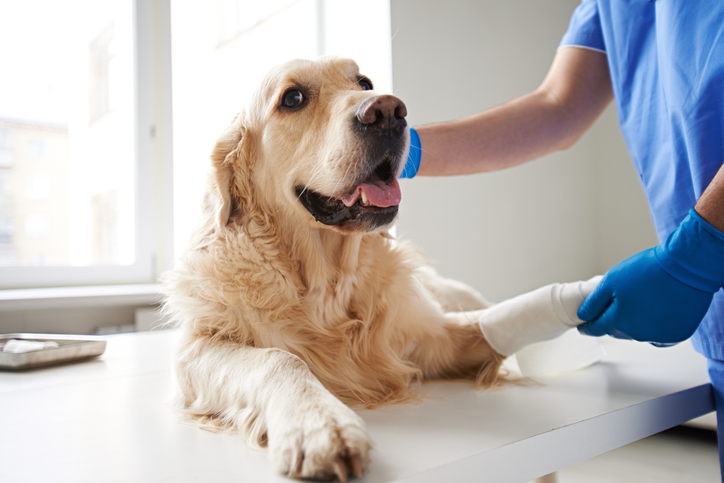Part 1: Emergency Care
By Kelley Kombrinck
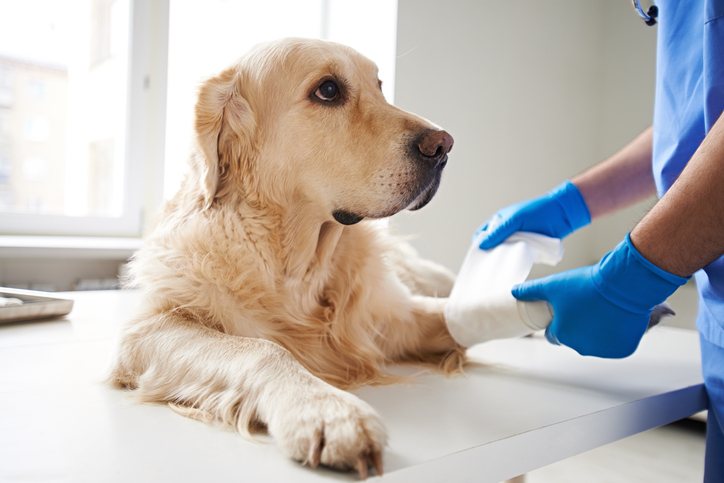
One of the things that charms us so much about dogs is their curiosity. They are inquisitive and explorative creatures who want to understand and interact with their surroundings. It is a very relatable, human trait that we find endearing. However, from time to time, it can also lead to our furry friends getting themselves into situations that could be potentially dangerous, or even life threatening.
Of course, any obvious, severe injuries, sickness or emergencies should be left to the expertise of your veterinarian, but sometimes quick action at home can help your dog be more comfortable and potentially stable until they can be seen by the vet. Occasionally too, there will be minor incidents that don’t require a trip to the animal clinic, but can, and should, be attended to at home.
In this 3-part series we will go over how to identify an emergency, some things you can do to help, pet CPR, and supplies you should keep around the house, just in case.
How to Know an Emergency
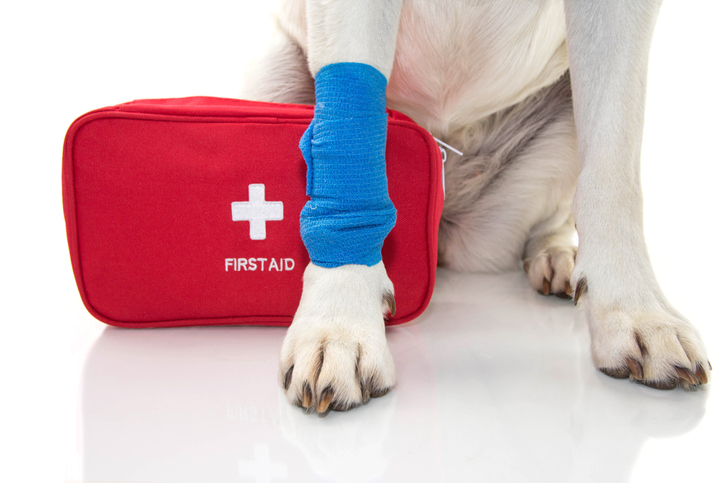
As always (and we will mention this more than once throughout this post), if there is any doubt, call the vet. They are trained to know what to look for and how to handle threats to your animal’s health.
It is important to know what constitutes an “emergency,” for your dog. The first part of identifying the severity level of a situation with your dog, is knowing what is normal for them. You should be familiar with their appetite, sleep habits, temperament, and bathroom habits. Any significant and ongoing change in any of these can be a sign that something is wrong. This is particularly true of their bowel movements. Changes in frequency, appearance or even odor can be indicators of serious problems.
However, sometimes there is an obvious problem that needs immediate attention from a professional. Below is a list of situations where you should seek veterinary assistance as soon as possible. If your dog(s) are experiencing anything from the list below, get them to the vet.
- aren’t breathing or have trouble breathing
- are unresponsive
- have collapsed and can’t seem get up
- having a seizure
- may have broken bones
- not moving as well as usual or lacking normal coordination
- have possibly ingested something toxic
- experience vomiting or diarrhea for over than 24 hours.
With that in mind, there are some things you can do to help your dog hang in there and be more comfortable until they’re able to be seen (if the problem is immediate and cannot totally wait).
Checking Your Dog’s Pulse
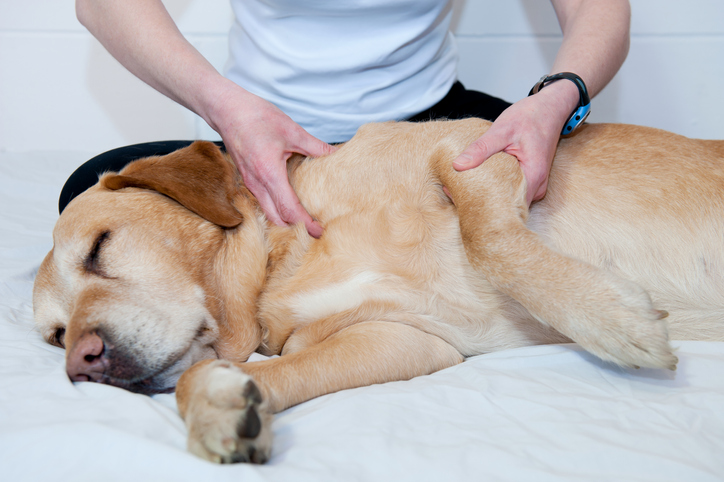
There may come a time when you will need to check for your dog’s pulse. The vet on the phone may ask you if you can find it, and if so, what is the heartrate (beats per minute).
To find the dog’s pulse quickly, check the along their thigh, somewhere in the upper third. Place your hand over the top of their thigh and gently squeeze or press your fingers just underneath their leg, on the inside of the thigh. You should be able to feel a pulse. NOTE: Try not to locate your dog’s pulse using your thumb. Your thumb also has a pulse and could mislead you on what your dog’s pulse actually is. Once you’ve found the pulse, time it for 15 seconds. You can then multiply by 4 to get the beats per minute.
Taking Care of Burns
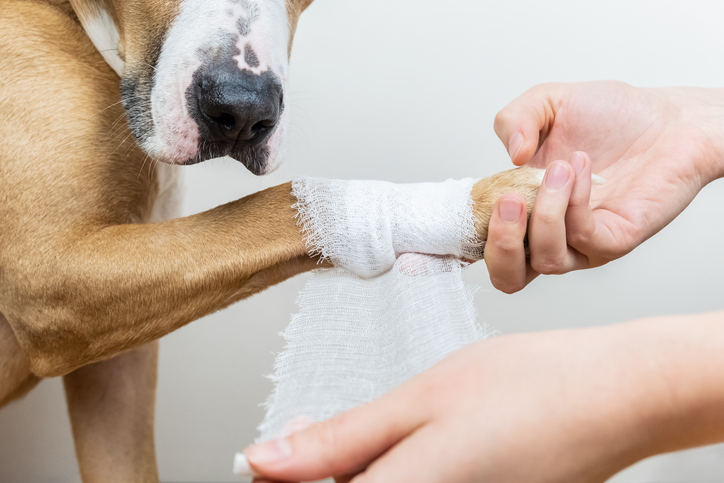
Burns can happen in a variety of ways. If your dog gets a semi-serious to severe burn, the first step is to make sure you cool the wound/burn with water for about 10 minutes. You don’t want to apply any dressings that will stick to the burn and if you are crating your dog on the way to the vet, just make sure you have a clean, smooth plastic surface for them to rest on. Sheets and blankies can also stick to burnt skin and will complicate treatment. Also, it is not recommended to use cling film with your dog.
Bleeding Claw
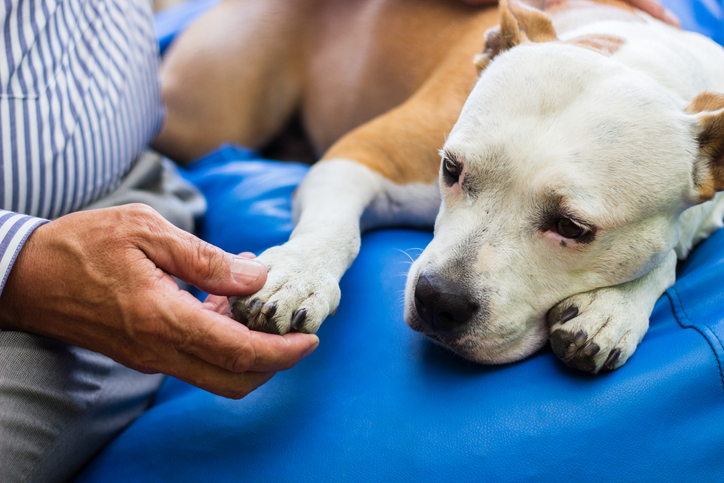
It’s important to care for your dog’s claws and clipping them can be tricky. It’s easy to clip them too far up and cause bleeding. If you have accidentally nicked the claw too far up and it starts bleeding, put an absorbent dressing over the paw and wrap the bandage securely (but not too tight) as far up their leg as you can so the dressing stays in place. Keep a close eye on your dog’s paw and if the bleeding doesn’t seem to be slowing or stopping, contact your vet.
These are just a few tips for helping keep your dog happy and healthy in case of an unfortunate injury or accident. You can find more safety tips on the Pet Stop blog in our article from 2012 HERE and be sure to check back in next month for part two of our dog First Aid series where we will discuss how to administer CPR to your pet and some other helpful hints.
